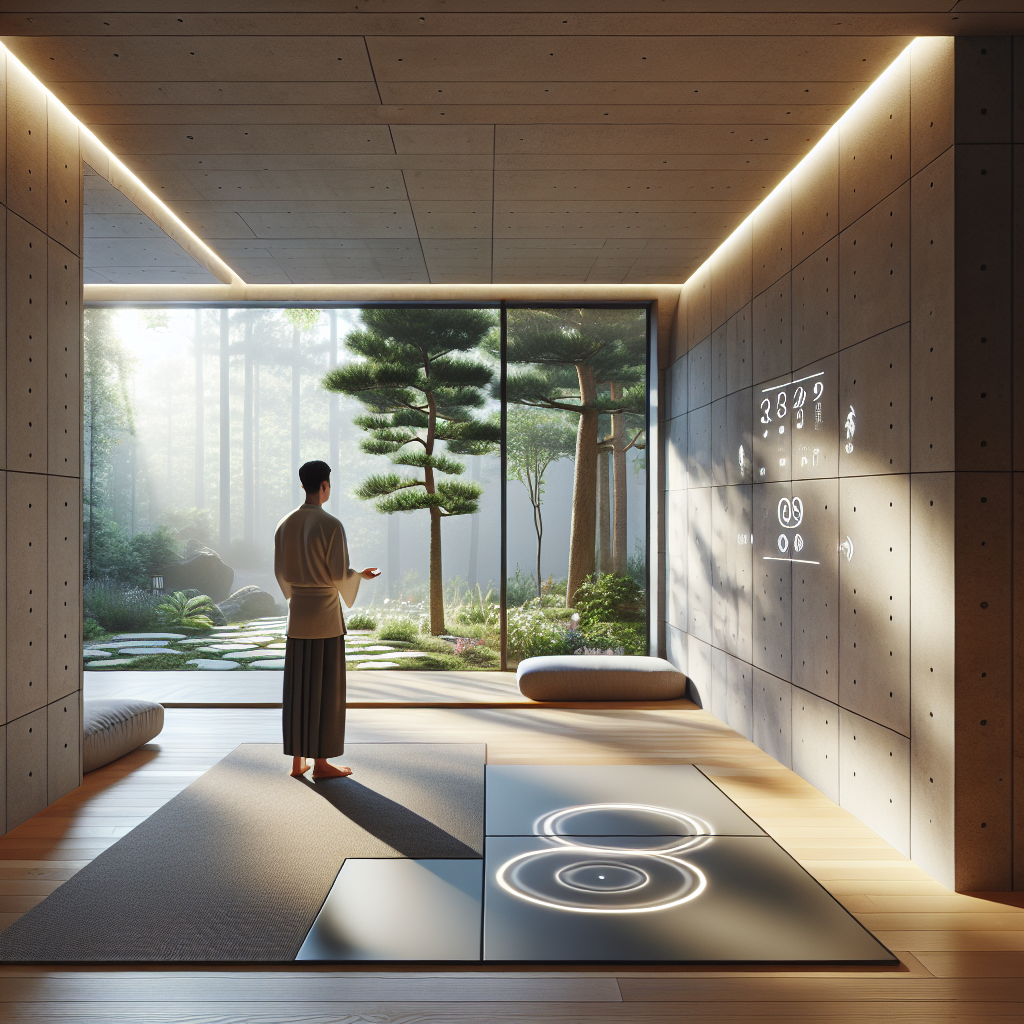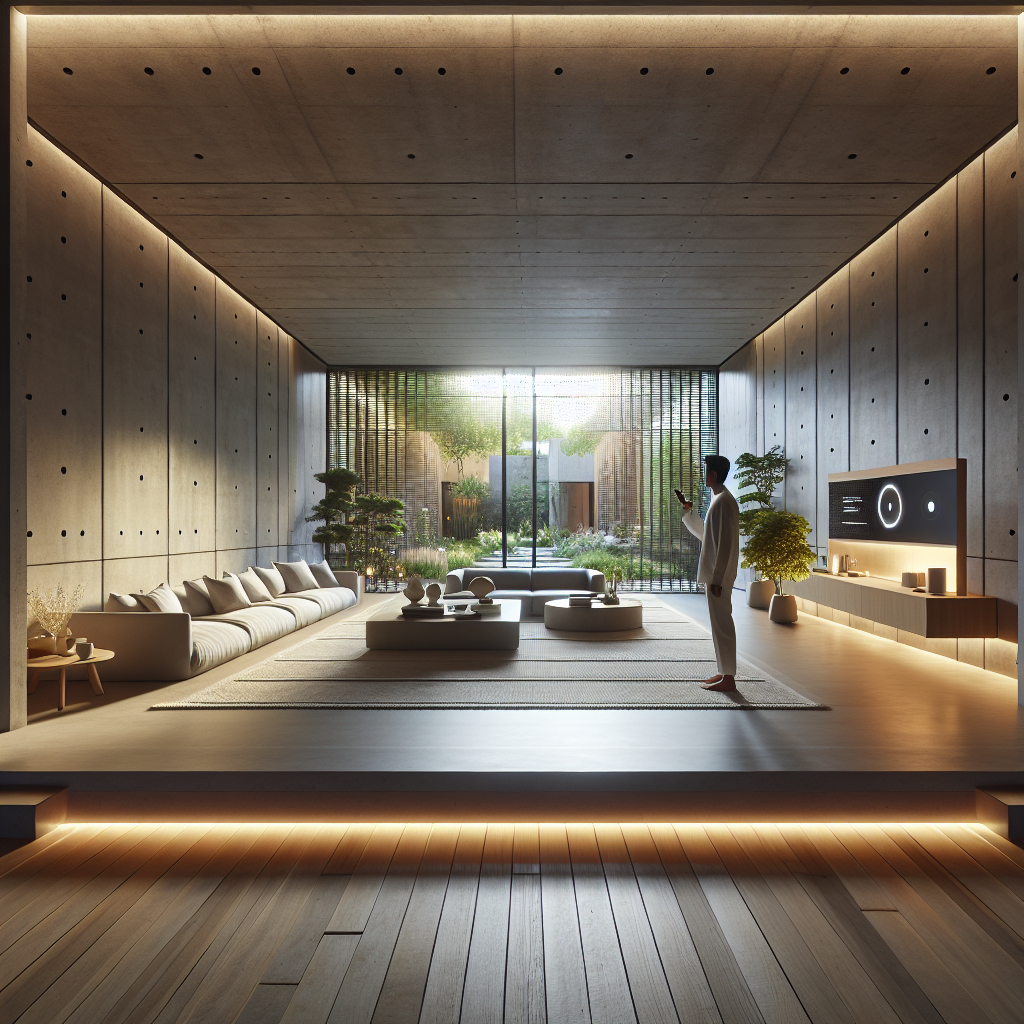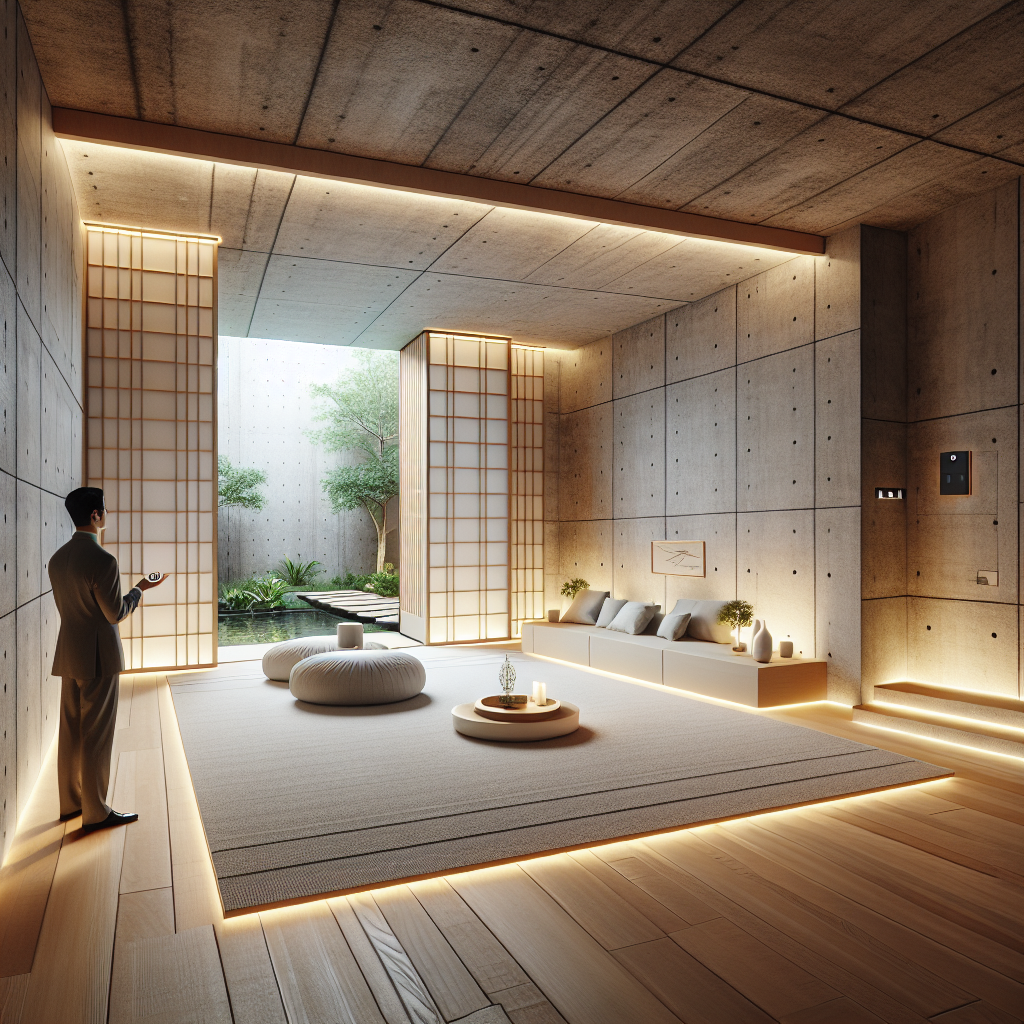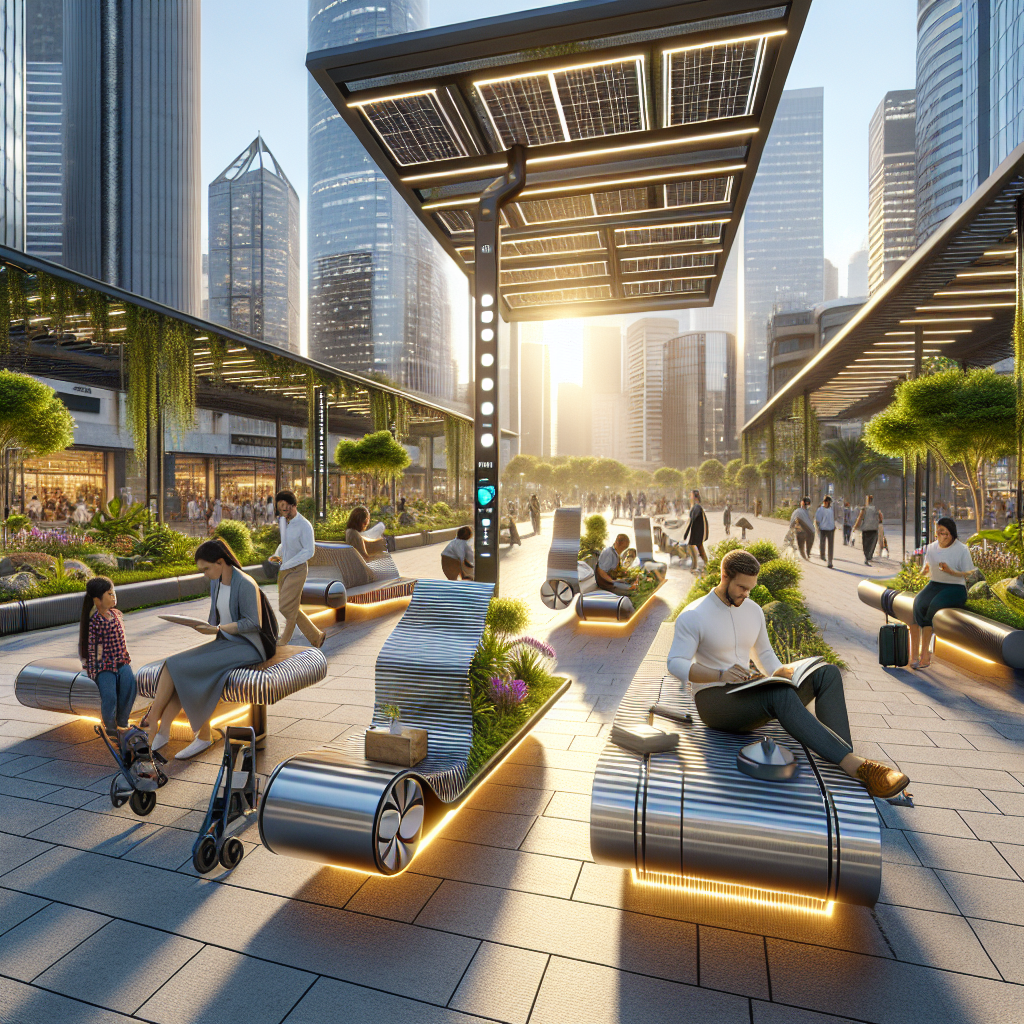High-tech Zen balancing: minimal design with voice-controlled environments
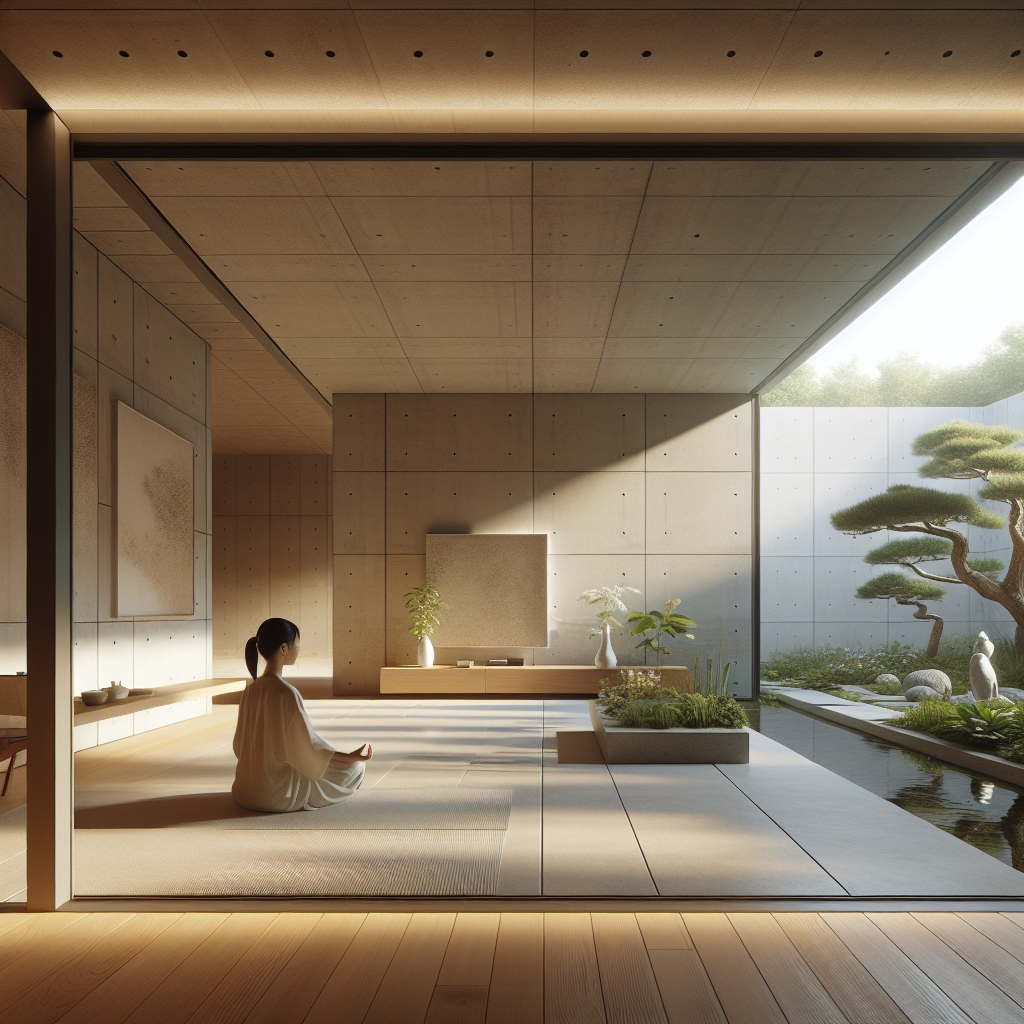
High-Tech Zen Balancing: Minimal Design with Voice-Controlled Environments
In the bustling rhythm of modern life, the pursuit of tranquility within our living spaces has become more than a mere trend—it is a necessity. The contemporary homeowner, driven by an aspiration for simplicity and serenity, seeks refuge in minimalistic interiors infused with cutting-edge technology. The convergence of minimal design and voice-controlled environments has emerged as a powerful paradigm, redefining how we interact with our surroundings and achieving what can aptly be termed “High-Tech Zen.”
The Philosophy of Minimalism Meets Smart Technology
Minimalism, deeply rooted in the Japanese aesthetic principle of wabi-sabi, celebrates the beauty of imperfection, simplicity, and authenticity. It emphasizes uncluttered spaces, clean lines, and a restrained palette, fostering an environment conducive to mindfulness and calm. However, as technology permeates every facet of our lives, the integration of smart home solutions becomes essential, posing a challenge: how can we seamlessly merge technology with minimalism without disrupting its serene essence?
The answer lies in voice-controlled environments. By removing physical interfaces and embedding intelligent voice-activated systems into architectural elements, designers achieve a harmonious balance between functionality and aesthetics. The result is a living space that is both technologically advanced and visually serene, embodying the essence of High-Tech Zen.
Invisible Interfaces: The Rise of Voice-Controlled Minimalism
Imagine stepping into a room devoid of visible switches, screens, or remotes. Instead, a gentle voice command adjusts the lighting, temperature, or even opens concealed cabinetry. This vision is now a reality, thanks to advancements in voice-controlled technology. Brands like Amazon Alexa, Google Assistant, and Apple’s Siri have evolved beyond basic tasks, becoming integral to architectural design and interior planning.
Incorporating voice-controlled systems into minimalistic interiors eliminates visual clutter, enhancing the spatial experience. For instance, recessed LED lighting hidden within architectural elements responds to voice commands, creating customizable ambiance without interrupting the room’s clean lines. Similarly, motorized window treatments and concealed storage solutions can be effortlessly operated through simple voice prompts, preserving the integrity of minimalist design.
Case Study: The Zen Residence by Tadao Ando
Renowned architect Tadao Ando’s recent project, the Zen Residence in Kyoto, exemplifies the perfect marriage of minimalism and voice-controlled technology. Ando, celebrated for his mastery of concrete and light, has embraced smart technology to elevate his architectural philosophy. The residence, characterized by its stark concrete walls, expansive glass panels, and meticulous attention to detail, integrates voice-controlled systems seamlessly.
Upon entering, residents experience a space defined by its silence and visual purity. Yet, with a simple spoken phrase, hidden speakers emit ambient sounds of nature, enhancing the meditative atmosphere. Voice commands also control the residence’s climate, lighting, and security systems, all subtly embedded within the architectural framework. This integration not only preserves Ando’s minimalist aesthetic but also enriches the inhabitants’ sensory experience, demonstrating how technology can enhance rather than detract from architectural purity.
Health and Well-being: The Human-Centric Approach
The integration of voice-controlled environments within minimalistic spaces aligns with the principles of biophilic design, emphasizing the connection between humans and nature to enhance well-being. According to recent studies, environments that reduce visual clutter and provide intuitive interaction methods significantly decrease stress levels and improve cognitive function. As explored in our previous article on biophilic design and its impact on human health and well-being, incorporating natural elements and intuitive technologies fosters emotional and physical wellness.
Voice-controlled minimalism contributes to this by eliminating distractions and creating spaces that encourage mindfulness and presence. By reducing reliance on screens and physical interfaces, occupants engage more fully with their environment, promoting relaxation and mental clarity.
Sustainability and Efficiency: A Symbiotic Relationship
Beyond aesthetics and well-being, voice-controlled minimalism significantly contributes to sustainability. Smart home technologies, when seamlessly integrated, optimize energy consumption and resource management. Voice-activated systems monitor occupancy, adjust lighting and temperature accordingly, and even manage water usage, ensuring efficiency without compromising comfort.
Innovative projects like those discussed in our feature on biodegradable architecture demonstrate how sustainability and technology can coexist harmoniously. Similarly, voice-controlled minimalism exemplifies how technological advancements can enhance sustainable living practices, aligning with global efforts toward achieving net-zero emissions and environmental responsibility.
Challenges and Considerations in Voice-Controlled Minimalism
Despite its numerous advantages, integrating voice-controlled technology into minimalist design is not without challenges. Privacy concerns, data security, and reliability remain critical considerations. Architects and designers must collaborate closely with technology providers to ensure robust security measures and reliable performance, maintaining user trust and satisfaction.
Moreover, the technology must remain unobtrusive and intuitive, enhancing rather than complicating the user experience. Designers must carefully select and position microphones, speakers, and sensors to ensure seamless interaction without compromising the visual integrity of the space.
Future Directions: The Evolution of High-Tech Zen
As voice-controlled technology continues to evolve, its potential applications within minimalistic design expand exponentially. Emerging innovations, such as AI-driven adaptive environments and responsive architecture, promise even greater personalization and interactivity. Our exploration of responsive design creating spaces that adapt to our needs highlights the exciting possibilities ahead.
Future homes may intuitively respond to occupants’ emotional states, adjusting lighting, soundscapes, and spatial configurations to promote well-being. Voice-controlled environments will become increasingly sophisticated, understanding context, nuance, and individual preferences, further enhancing the harmonious balance between technology and minimalism.
Conclusion: Embracing the Balance
The integration of voice-controlled environments within minimalistic design represents a significant advancement in contemporary architecture and interior design. By eliminating visual clutter, enhancing user interaction, and promoting sustainability, High-Tech Zen embodies a holistic approach to modern living. Architects, designers, and homeowners alike are embracing this synergy, recognizing its potential to transform living spaces into sanctuaries of tranquility and innovation.
As we continue to explore and refine this balance, the possibilities for creating serene, intuitive, and sustainable environments are boundless. High-Tech Zen is not merely a design trend—it is a thoughtful response to the complexities of modern life, offering a harmonious path toward simplicity, mindfulness, and technological sophistication.
For further reading on the intersection of technology and design, explore our in-depth analysis of smart home technology revolutionizing home automation.
Embrace the future of living spaces—where minimalism meets intelligent design, and tranquility meets innovation.
